Are you finding it difficult to track your brand’s performance and stay ahead of the competition in the business world? Well, you shouldn’t stress about it as I have 11 insane brand tracking tools that will blow your company’s profits out surprisingly if you admire my tips. As an experienced individual, I know how crucial it is to have a solid understanding of your brand’s online presence, sentiment, and performance. That’s why I’ve been using these innovative tools to keep an eye on the brands I work with and mine. And let me tell you, the results have been nothing short of mind-blowing.
Key Takeaways
- Brand tracking tools are essential for understanding your brand’s performance and staying ahead of the competition in the business world.
- Tools like YouScan enable tracking across multiple languages, offering a global view of brand sentiment, which is crucial for businesses with international aspirations.
- Consistently tracking metrics and analyzing data, brands can measure progress, anticipate consumer shifts, and make informed decisions to stay ahead in the competitive market landscape.
- Utilizing brand tracking tools provides valuable insights that shape marketing strategies, improve brand resonance, and facilitate entry into new markets.
Personal experience with Brand Tracking Tools
Before I talk about the essential tools, let’s talk about why brand tracking is so important in the first place.
As a seasoned person, I can’t stress enough how crucial brand tracking is for the success of any business. It’s not just about monitoring your brand’s online presence or social media mentions – it’s about getting a deep, holistic understanding of how your customers perceive your brand and how it stacks up against the competition.
I’ve seen firsthand how powerful brand tracking can be. When I was working on a rebrand for one of my clients, we used a comprehensive brand tracking tool to monitor everything from brand awareness and sentiment to customer loyalty and purchase intent. The insights we gained were invaluable in shaping our marketing strategy and ensuring that our new brand resonated with our target audience.
For example, we discovered that while our brand had high awareness among our core customer base, we were struggling to break into a new market segment. Armed with this knowledge, we were able to adjust our messaging and marketing tactics to better appeal to those potential customers. And the results were impressive – within a few months, we saw a significant uptick in brand consideration and sales in that target market.
Get ready, because I’m about to unveil 11 brand tracking tools that would take up the profits and growth of your company giving you the desired expansion you desire.
11 Brand Tracking Tools
#1. Google Analytics

A staple in any marketer’s toolbox, Google Analytics provides valuable insights into website traffic, user behaviour, and conversion rates. By tracking key metrics, you can measure the success of your brand campaigns, identify areas for improvement, and optimize your website’s performance.
#2. Hootsuite
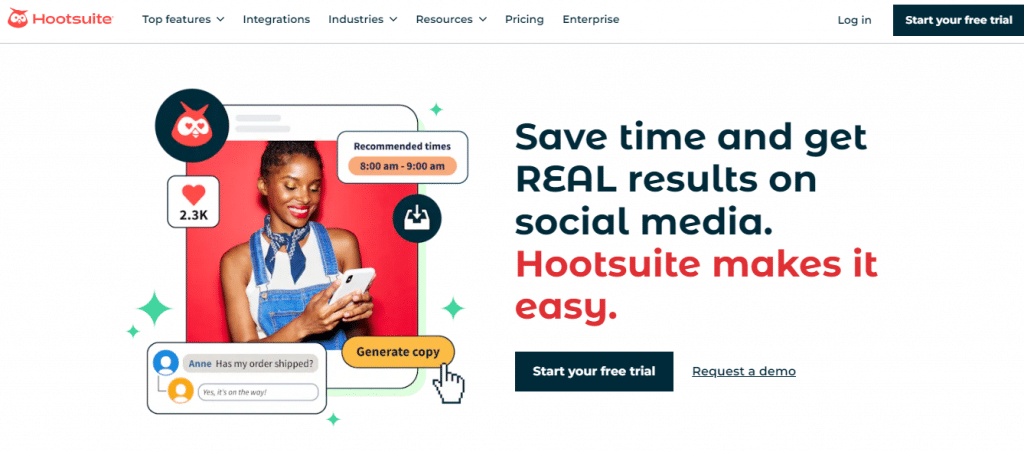
Hootsuite is a popular social media management tool that allows you to schedule posts, monitor engagement, and analyze performance across multiple platforms. By staying organized and consistent with your social media presence, you can build a strong brand identity and foster meaningful connections with your audience.
#3. Mention
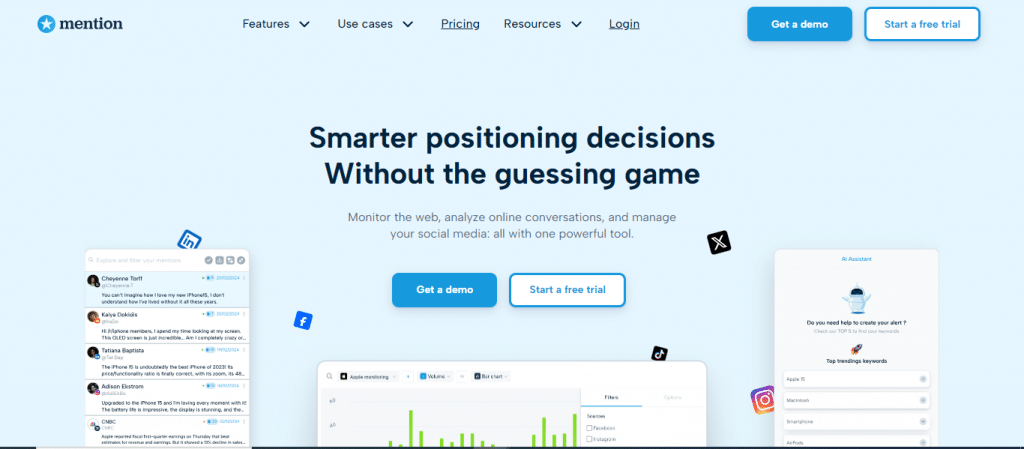
It’s fantastic when people talk about your brand online, but how do you find all those mentions? Mention is a powerful tool that lets you track your brand’s mentions across the web, including social media, news sites, and blogs. You can even set up alerts to be notified whenever your brand is mentioned, so you can jump on any potential crises or opportunities.
#4. BrandWatch

One of the most comprehensive brand tracking tools available, BrandWatch offers real-time social media listening and analysis. By harnessing the power of artificial intelligence, it enables you to monitor mentions of your brand across various platforms and gain a deeper understanding of how your audience perceives your brand.
#5. Brand24
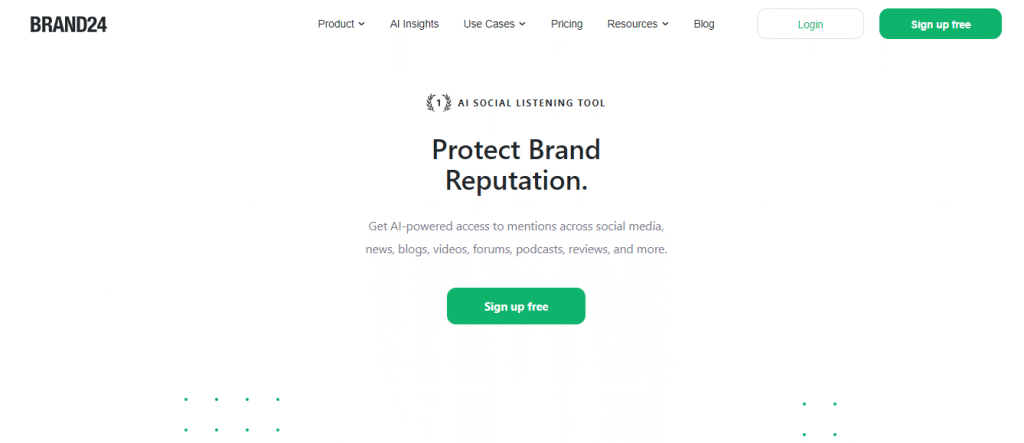
Real-time crisis management? You got it. Brand24 monitors online mentions of your brand 24/7, so you can address any negative feedback or potential PR disasters before they snowball. This is especially crucial in today’s fast-paced social media landscape, where a single misstep can quickly go viral.
#6. Sprout Social
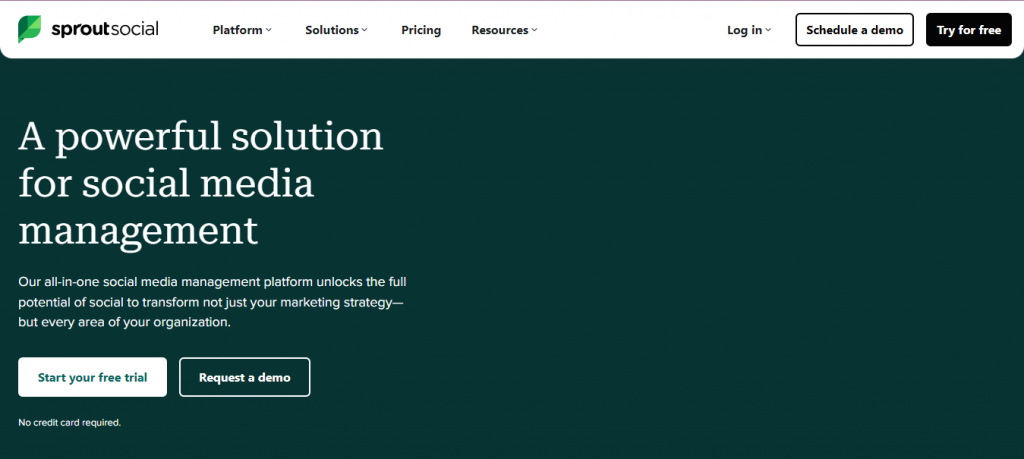
Sprout Social is a social media management and analytics platform that helps you track your brand’s performance across multiple social networks. It offers features like social listening, competitor analysis, and team collaboration.
#7. YouScan
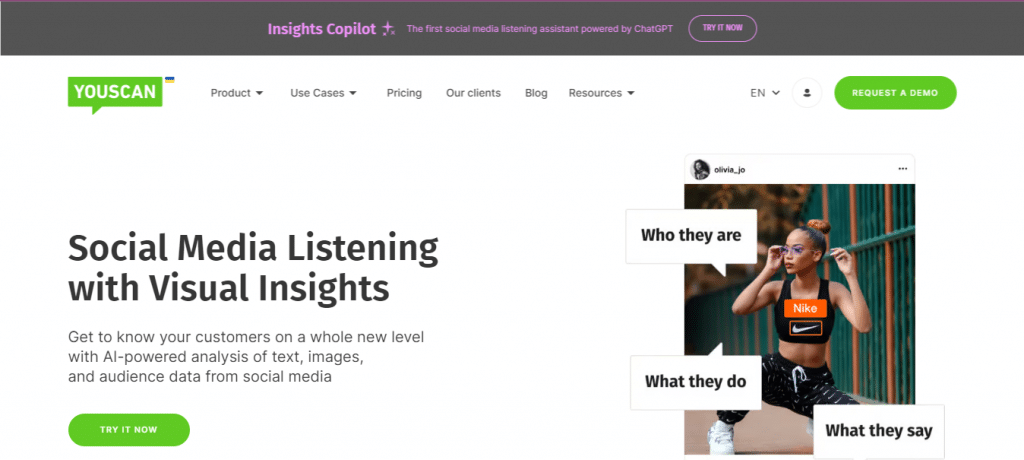
Ever wished you could track your brand across multiple languages? YouScan makes that dream a reality. This powerful tool monitors brand mentions in over 100 languages, giving you a global view of your brand sentiment. This is a game-changer for businesses with international reach or aspirations.
#8. Meltwater
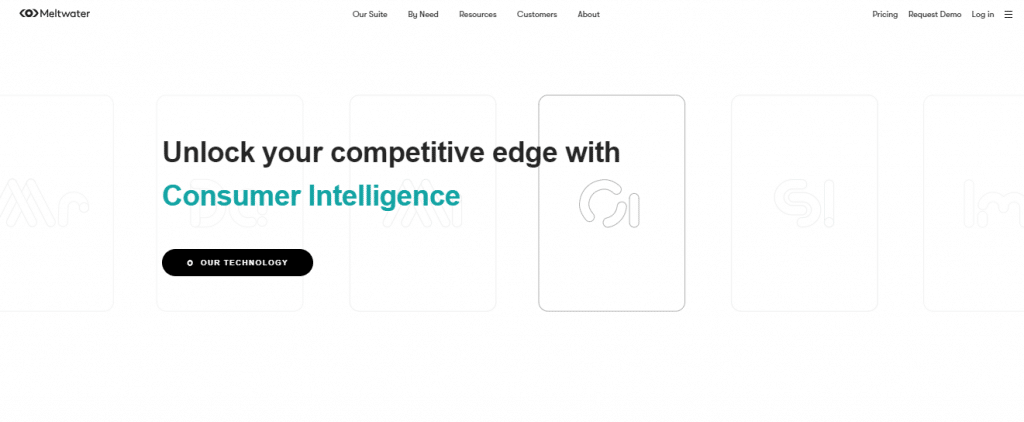
Meltwater is a powerhouse for media monitoring, offering comprehensive coverage across traditional and new media outlets. Use it to track press mentions, identify media trends, and even secure valuable backlinks for your website. Remember, positive media coverage can do wonders for your brand reputation and credibility.
#9. Mentionmapp

Visual learners, rejoice! Mentionmapp helps you visualize the online conversation around your brand. It creates a mind map that shows you how different topics and keywords are connected, giving you a deeper understanding of the overall brand narrative. This can be incredibly helpful for identifying areas where you need to strengthen your messaging or uncover unexpected opportunities to connect with your audience.
#10. SEMrush

SEMrush goes beyond traditional brand tracking by offering competitive intelligence. With its robust suite of tools, you can analyze your competitors’ brand strategies, identify gaps in the market, and uncover opportunities to outperform the competition.
#11. UTM Parameters

This might seem like a basic tool, but UTM parameters are essential for tracking the effectiveness of your marketing campaigns across different channels. By adding UTM parameters to your website links, you can see exactly where your traffic is coming from, what content is resonating with your audience, and ultimately, which campaigns are driving sales.
Benefits of Having Brand Tracking Tools
Having worked in the marketing field for several years, I can attest to the immense benefits that come with utilizing brand tracking tools. These tools are not just about monitoring your brand’s online presence; they are about gaining deep insights into how your customers perceive your brand, staying ahead of the competition, and making informed decisions that drive growth.
- Ability to measure your brand’s performance over time. By consistently tracking metrics like brand awareness, loyalty, and consumer associations, you can identify trends, track improvements, and make strategic adjustments to your marketing and brand strategy.
- Staying connected to consumers is another significant benefit of brand tracking tools. Public perception of a brand is constantly evolving, and by monitoring this perception, you can adapt your brand to remain relevant and appealing to your target audience.
- Brand tracking tools enable you to gauge the effectiveness of your marketing campaigns and product launches. By collecting feedback and insights from customers before and after a campaign, you can assess whether your messaging resonates as intended, identify areas for improvement, and measure the impact on brand perception.
- Additionally, brand tracking tools provide valuable insights for comparing your brand to competitors. Understanding how your brand stacks up against the competition in terms of awareness, association, and consideration is crucial for developing competitive strategies. By analyzing this data, you can identify areas where you excel, pinpoint areas for improvement, and strategize on how to differentiate your brand effectively.
What is a Brand Tracking Tool?
A brand tracking tool is a software or platform that helps businesses measure and monitor the health and performance of their brand over time. These tools utilize various methods, such as surveys, data analysis, and social listening, to gather insights and assess key performance metrics related to brand awareness, brand recall, brand preference, customer satisfaction, and likelihood of purchase.
Brand tracking tools provide businesses with valuable information about how their brand is perceived by their target audience. Also, how it compares to competitors, and how it evolves in the minds of consumers. By regularly tracking and analyzing these metrics, businesses can make informed strategic decisions, optimize their brand strategy, and drive better business outcomes.
They help businesses understand their brand’s health, compare performance with competitors, understand consumer preferences, evaluate campaigns, manage reputation, and adapt strategies.
What is an Example of Brand Tracking?
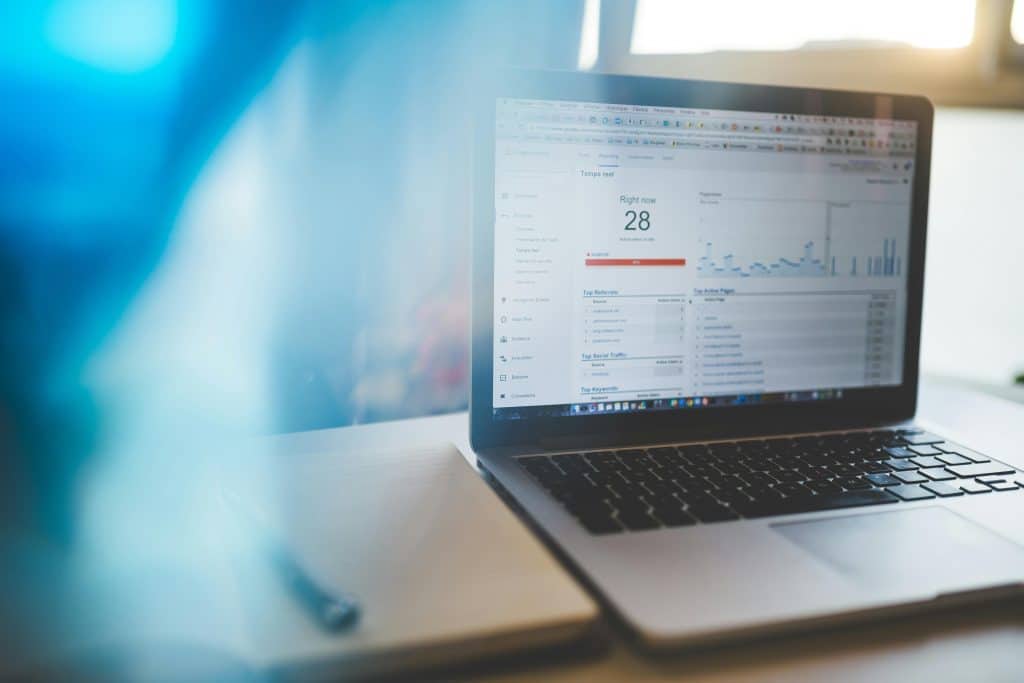
One example of brand tracking is monitoring consumer trends and preferences over time, by consistently tracking metrics like brand awareness, loyalty, and consumer associations. Brands can identify trends, measure improvements, and make strategic adjustments to their marketing and brand strategy.
For instance, a shoe company that releases a new high-end sports sneaker could include a MaxDiff analysis in its brand tracker to measure the importance of preferences like shoe material (canvas, leather, etc.), style, and price point. By analyzing how these preferences change over time, the shoe brand can gain valuable insights into what features resonate most with consumers and adapt their product accordingly.
How Do You Track Brand Performance?
Tracking brand performance involves monitoring and analyzing various metrics and indicators to assess the effectiveness and impact of a brand’s marketing efforts.
Here are some common methods and metrics used to track brand performance
- Brand Awareness – How familiar your target audience is with your brand
- Brand Reputation – The public’s overall opinion of your brand
- Brand Loyalty – How likely customers are to continue buying your products
- Share of Voice (SOV) – Your brand’s visibility compared to competitors
- Social Media Reach – The size of your audience on social channels
- SEO Metrics – How well your brand ranks in search results
- Return on Investment (ROI) – The financial return from your marketing efforts
- Online Reputation – Assessing your brand’s reputation and identify areas for improvement.
- Customer Lifetime Value – Measuring the lifetime value of your customers helps assess the long-term impact and profitability of your brand.
How to Create a Brand Tracker?
Creating a brand tracker is an essential part of my role as a brand strategist. Through my personal experience, I’ve learned the following steps to create an effective brand tracker:
- Defining Objectives: Before diving into creating a brand tracker, it’s crucial to clearly define the objectives. By setting specific objectives, we could tailor the brand tracker accordingly.
- Identifying Key Metrics: Once the objectives are defined, it’s important to identify the key metrics that align with those goals. Metrics such as aided and unaided brand recall, brand preference, and customer satisfaction scores have been vital in assessing brand performance.
- Designing the Survey: To collect the necessary data, designing a comprehensive survey is crucial. I have used online survey tools to create questionnaires that capture the desired metrics.
- Setting a Baseline: Before implementing the brand tracker, it’s essential to establish a baseline measurement. This involves conducting an initial assessment to understand the current state of the brand. By setting a baseline, we can track progress and measure the impact of our efforts over time.
- Implementing Tracking: With the survey designed and the baseline established, it’s time to implement the brand tracker. This involves regularly collecting data using the chosen method, whether it’s through online surveys, phone interviews, or social media listening.
Also read: The Top 2024 Brand Mention Tools (All You Need)
- Analyzing Data: Once the data is collected, it’s time to analyze it to gain meaningful insights. In my experience, analyzing the data involves identifying trends, patterns, and correlations that provide valuable information about brand performance. This analysis helps in understanding the strengths and weaknesses of the brand.
- Reporting and Visualization: To effectively communicate the findings, it’s important to present the data in a visually appealing manner. The use of charts, graphs, and infographics to create meaningful visualizations that make it easier for stakeholders to understand the data and draw actionable insights.
- Taking Action: The insights gained from the brand tracker are valuable only if they are put into action. In my experience, using the findings to inform strategic decisions and develop actionable plans has been crucial in improving brand performance.
- Tracking Progress: Lastly, continuous tracking and monitoring of the brand metrics are necessary to assess the impact of the actions taken and measure progress. Regularly revisiting the brand tracker helps in understanding the effectiveness of strategies and making any necessary adjustments.
What is Brand Tracking and Need for Brand Tracking?
Through my personal experience, I have come to understand the importance of brand tracking and its need in today’s competitive marketplace.
Brand tracking involves monitoring and evaluating various aspects of a brand’s performance over time. It helps businesses understand how their brand is perceived by their target audience, and measure the effectiveness of their marketing efforts. By regularly tracking key brand metrics, businesses can make informed decisions and take proactive steps to enhance their brand’s impact and success.
One of my recent projects involved working with a well-established consumer goods company that wanted to track their brand performance. By implementing a brand tracking program, we were able to measure brand awareness among their target audience. This helped us understand the level of brand recognition and recall. Brand tracking enabled us to compare our client’s brand performance with that of their competitors.
The need for brand tracking has become increasingly important in today’s dynamic and ever-evolving marketplace. With the rise of social media and online platforms, consumers have more options and information at their fingertips. As a result, brands must continuously assess and adapt to meet the changing needs and expectations of their customers.
Brand tracking helps businesses stay ahead of the curve by identifying shifts in consumer sentiment, market trends, and competitive landscapes. This enables brands to make data-driven decisions, refine their marketing strategies, and strengthen their brand positioning.
Conclusion
The world of brand tracking is vast, but with these 11 tools in your arsenal, you’ll have the insights you need to refine your marketing strategy, build stronger customer relationships, and ultimately, boost your bottom line. I’ve used these tools to transform my own company’s brand. I’ll share the precise strategies and templates I’ve implemented, so you can apply them directly to your business. Remember, brand tracking is an ongoing process – the more you learn about your audience and how they perceive your brand, the better equipped you’ll be to stay ahead of the curve. So, are you ready to take your brand tracking to the next level?
Related Article
- Rebuilding Trust After a Brand Mishap: 11 Expert Tips
- HOW TO MEASURE BRAND REPUTATION IN 2024 (MY EXPERT TIPS)
- The Top 2024 Brand Mention Tools (All You Need)
- Event Branding Examples: Ideas to Inspire Your Next Big Event





